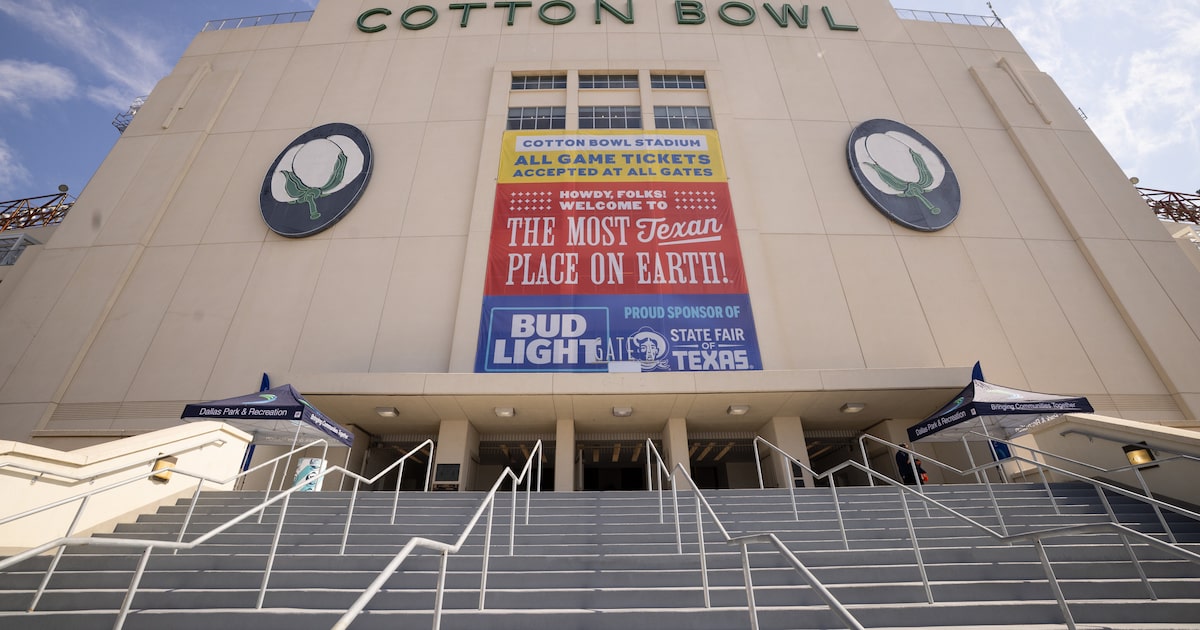Dallas recently celebrated a milestone: the $140 million renovation of the storied Cotton Bowl. It was a proud day for our community. But, as is often the case at Fair Park, joy is tempered by challenge. On Sept. 16, the city of Dallas, international venue manager Oak View Group (OVG360), and the nonprofit Fair Park First ended their six-year, complicated relationship.
For many in Dallas, a setback at Fair Park feels personal. Moving here in 1985, I discovered Fair Park. Over the years, I’ve worn many hats in service to the landmark. I’ve been a visitor, member, advocate, fundraiser, board member and policymaker. I’ve been involved in the creation of the plans meant to guide its future, and I understand the regulations that safeguard its past. I’ve chaired multiple institutions charged with stewarding its landmarks — most recently chairing the Fair Park First board through its separation from OVG360.
Fair Park’s most recent chapter of governance began in 2019, when, after a lengthy procurement process, the city handed management of Fair Park to Spectra Venue Management (later OVG360) and required the creation of a nonprofit, Fair Park First. In theory, oversight rested with the nonprofit, but by contract, the for-profit subcontractor controlled all day-to-day functions and operations.
The model had its merits. A global operator could bring new revenue through its vast booking network and improve park operations through accepted industry practices. But crises soon tested the model. The pandemic shuttered much of the 277-acre campus, slashing annual attendance to a fraction of its annual 5 million visitors. A winter freeze caused more than $7 million in damage. Formal and private reviews of the subcontractor, OVG360, indicated missed sponsorship goals, inconsistent customer service, spotty maintenance practices and finally the apparent misallocation of private funding sources.
Opinion
While mistakes were made, progress was also achieved: Stadium concerts returned after a 20 year hiatus, upwards of $60 million was raised or granted, new tenants were identified and new sources of public capital found. The central challenge, however, remains unchanged: how to achieve financial sustainability.
Fair Park First made progress in the most difficult of circumstances: completing an updated master plan, raising significant funds, implementing community-centered programming and building an effective board. And we kept moving forward on our central focus: securing most of the needed funds for a long-promised community park.
Now, Fair Park is back in the city’s hands and our hope is that a new development agreement with the Park Department will allow the community park to move forward and break ground in 2026, keeping faith with the neighborhood where houses once were bulldozed for parking lots.
Philanthropy is critical, but Fair Park cannot be saved by philanthropy alone. Revenue from tenants, exhibitions and events must grow.
Fair Park will always need some annual operating and long-term capital funds. But wild fluctuations in bond programs —$50 million in 2017, $5 million in 2024 — make long-term capital planning for the vast site difficult. The voter-approved hotel tax dedication was a promising step, expected to generate an estimated $300 million for improvements to six buildings. However, in order to fulfill promises to voters and generate new building revenue, the funds must be deployed in a timely manner.
Smaller policy shifts can also help: rebalancing parking and rental agreements and expanding the small ticket surcharge can help fund routine maintenance. Attracting new tenants, both cultural and commercial, can breathe life into dormant spaces.
Unfortunately, all combined, these measures still won’t be enough. To truly revitalize Fair Park, Dallas must look beyond the city’s budget as well as many traditional economic development tools. As a city, state and national landmark, Fair Park’s architecture is protected, and those same protections can unlock economic development tools, such as historic tax credits, that can leverage private investment. New development — compatible hotel and retail additions —must be part of the mix. Done right, these can generate revenue without sacrificing history.
Fair Park is unlike any other city property. It is a collective of multiple missions and identities — cultural institutions, concert and sports venues, agricultural barns, exhibition buildings and public gathering spaces. To support some of those uses, specific venue expertise must be brought from the outside. In other cases, collaboration between the city and campus partners can be leveraged to increase visitor attendance.
Nothing in Fair Park has ever been easy. But Fair Park, with its grand scale, intricate history and rich culture, is unique, not only locally, but nationally. It has endured for almost a century because people believed in its possibilities and fought for its future. We must stay focused and do the same today.
Veletta Forsythe-Lill serves on the board of directors of Fair Park First.
